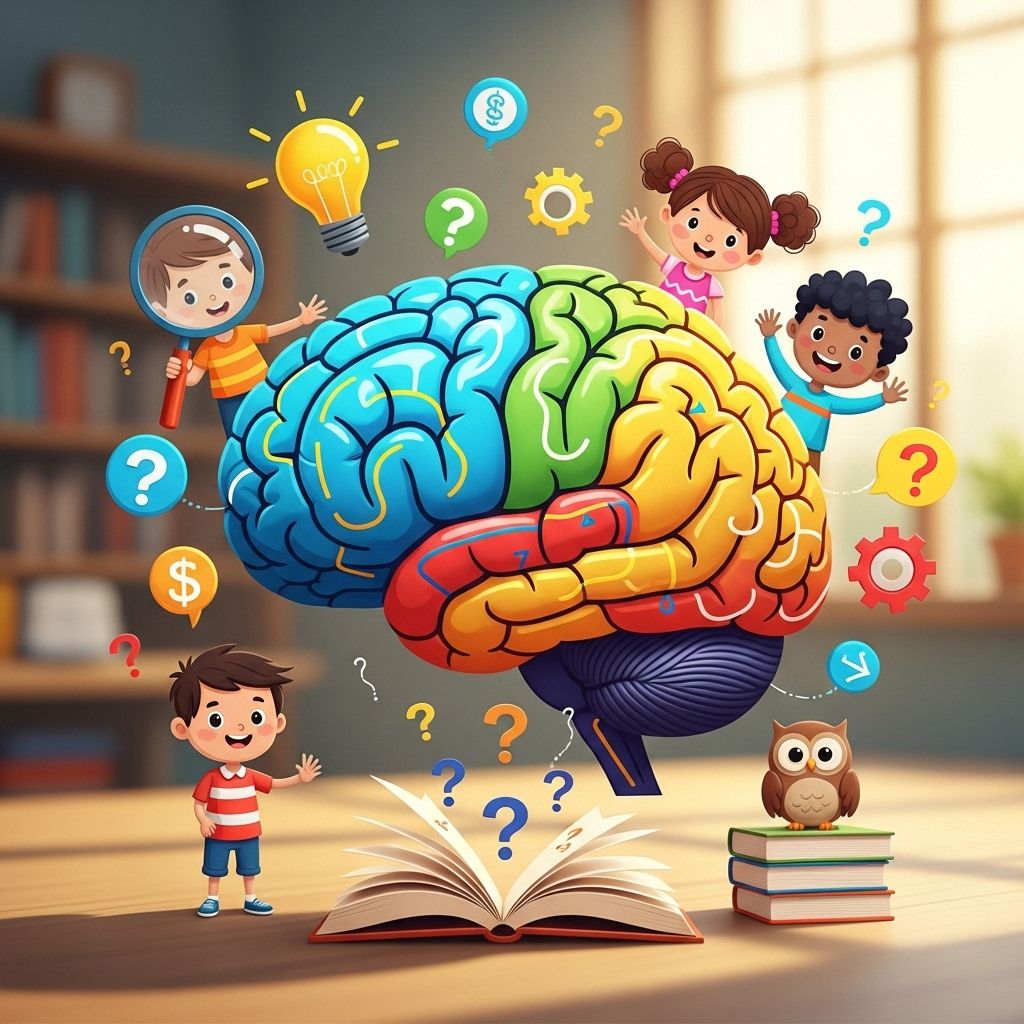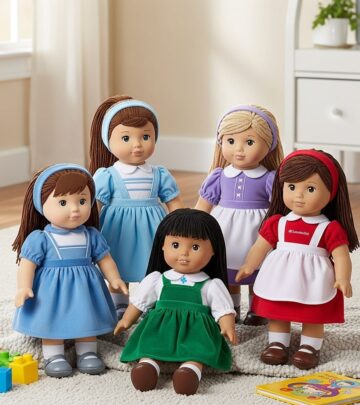115 Best Riddles for Kids: Fun, Laughter, and Learning
Silly puzzles that build curiosity and confidence in every young mind.

Few things spark curiosity and giggles like a good riddle! Whether you’re looking to pass the time on a long drive, spice up a classroom activity, or simply get your kids thinking and laughing after school, riddles are the perfect mix of fun and learning. In this comprehensive roundup, you’ll find more than 100 kid-friendly riddles—ranging from super easy to mind-bendingly tricky, with plenty of silly and unexpected twists along the way. Each riddle comes with an answer, so you can test your child’s reasoning or share a laugh together.
Table of Contents
- Easy Riddles for Kids
- Funny Riddles to Get Kids Giggling
- Tricky and Challenging Riddles
- Animal Riddles
- Word and Letter Riddles
- Math and Logic Riddles
- Frequently Asked Questions
Easy Riddles for Kids
These are perfect for young children or anyone just getting started with riddles! They’re simple, clever, and build early problem-solving skills.
- Q: How many months have 28 days?
A: All of them. - Q: What has a head and a tail but no body?
A: A coin. - Q: I have many teeth, but I can’t bite. What am I?
A: A comb. - Q: What can you hold in your right hand but never in your left?
A: Your left hand. - Q: What’s full of holes but still holds water?
A: A sponge. - Q: What can fill a room but takes up no space?
A: Light. - Q: What two things can you never eat for breakfast?
A: Lunch and dinner. - Q: What comes down but never goes up?
A: Rain. - Q: What is so simple it can only point, yet guides people all over the world?
A: A compass. - Q: What can you catch but not throw?
A: A cold. - Q: What goes up and down but never moves?
A: A stairway. - Q: What word begins and ends with an E, but only has one letter?
A: Envelope. - Q: What can you break even if you never touch it?
A: A promise. - Q: Which question can you never answer “yes” to?
A: “Are you asleep?” - Q: What gets bigger the more you take away?
A: A hole. - Q: What’s always in front of you but can’t be seen?
A: The future. - Q: What goes up but never comes down?
A: Your age.
Funny Riddles to Get Kids Giggling
Mix some laughter into your riddle sessions. These funny riddles are filled with wordplay and silly logic—great for parties and playdates!
- Q: Why are teddy bears never hungry?
A: Because they’re always stuffed. - Q: What animal can jump higher than a building?
A: Any animal—buildings can’t jump! - Q: Sam’s parents have three kids. Their names are Huey, Dewey, and…?
A: Sam. - Q: What do you get when you cross a snowman and a vampire?
A: Frostbite. - Q: What did the zero say to the eight?
A: “Nice belt!” - Q: Where would you take a sick boat?
A: To the dock. - Q: What gets wet while it’s drying?
A: A towel. - Q: I’m tall when I’m young, and I’m short when I’m old. What am I?
A: A candle. - Q: What room do ghosts avoid?
A: The living room. - Q: What can be cracked, made, told, and played?
A: A joke. - Q: What has a bottom at the top?
A: A leg. - Q: What has a head and a tail but no legs?
A: A coin. - Q: I sometimes run, but I cannot walk. What am I?
A: Your nose.
Tricky and Challenging Riddles
Ready to step up the challenge? These trickier riddles are sure to get kids (and adults!) thinking.
- Q: There’s only one word in the dictionary that’s spelled wrong. What is it?
A: The word “wrong.” - Q: What kind of band never makes music?
A: A rubber band. - Q: What can go up a chimney down, but can’t go down a chimney up?
A: An umbrella. - Q: What gets bigger the more you take away?
A: A hole. - Q: What breaks as soon as you say its name?
A: Silence. - Q: What has a neck but no head?
A: A bottle. - Q: What word is spelled incorrectly in every dictionary?
A: Incorrectly. - Q: What starts with P, ends with E, and has thousands of letters?
A: Post office. - Q: What runs around a backyard but never moves?
A: A fence. - Q: Two mothers and two daughters are in a car, yet there are only three people in the car. How is this possible?
A: They’re a grandmother, mother, and daughter. - Q: Which is heavier: a ton of feathers or a ton of bricks?
A: Neither—they both weigh a ton. - Q: What question can you never answer yes to?
A: “Are you asleep yet?”
Animal Riddles
Perfect for animal lovers, these riddles feature creatures from around the world.
- Q: I sleep during the day and fly at night, but I have no feathers to aid my flight. What am I?
A: A bat. - Q: How many animals did Moses take on the ark?
A: None—Noah took them. - Q: I have arms longer than my legs. I have been taught sign language to communicate. Who am I?
A: A gorilla. - Q: I like to stay awake at night and sleep during the day. What am I?
A: An owl. - Q: My skin is green and slippery; I have four legs and webbed feet; I hop on land and swim underwater. I love bugs and little fish to eat. What am I?
A: A frog. - Q: The alphabet goes from A to Z, but I go Z to A. What am I?
A: A zebra. - Q: What animal can be found at a baseball game?
A: A bat. - Q: What kind of lion never roars?
A: A dandelion. - Q: What animal is always at a baseball game?
A: A bat. - Q: What has ears but cannot hear?
A: A cornfield.
Word and Letter Riddles
These riddles play with words, letters, and how we use language. Great for kids who love clever questions!
- Q: What word starts with E, ends with E, and only has one letter?
A: Envelope. - Q: What word is spelled incorrectly in every dictionary?
A: Incorrectly. - Q: What has lots of keys but can’t open any doors?
A: A piano. - Q: What starts with a T, ends with a T, and has T in it?
A: A teapot. - Q: What begins with an “M”, ends with an “E”, and has a million letters in it?
A: Mailbox.
Math and Logic Riddles
Perfect for budding mathematicians and problem solvers, these riddles help develop critical thinking and confidence with numbers.
- Q: If there are three apples and you take away two, how many do you have?
A: You have two—the ones you took. - Q: If a plane crashes on the border between the United States and Canada, where do they bury the survivors?
A: Nowhere—survivors aren’t buried. - Q: What has many keys but can’t open a single lock?
A: A piano. - Q: What number is odd until you take away one letter, then it’s even?
A: Seven (remove the ‘s’ and it’s ‘even’).
Frequently Asked Questions
- Why are riddles important for kids?
- Riddles boost children’s critical thinking and problem-solving abilities while also enhancing language skills. They encourage creative thinking, teach kids to approach problems from different angles, and help build their vocabulary—all wrapped up in a playfully fun activity.
- What age is a good time to start riddles?
- You can introduce simple riddles to children as young as four or five, using easy questions and lots of visual clues or gestures. As kids get older and more confident with language and logic, you can try trickier riddles together.
- How should I use riddles with a large group of children?
- Try making riddles into a quiz game at home or in the classroom—give clues, take turns answering, or let kids come up with their own riddles to stump the grown-ups. Riddles also work well as brain breaks, party activities, or even scavenger hunt clues.
- Can riddles be educational?
- Absolutely—riddles teach comprehension, deduction, and language skills in an engaging way. They’ve been used for centuries to inspire learning and help kids develop both logic and creativity.
- Are there good books for kids who love riddles?
- Yes! Many children’s joke and riddle books include funny questions, brain teasers, and classic conundrums. Libraries and bookstores have options for all ages and levels.
Tips for Making Riddles a Daily Delight
- Slip a riddle into your child’s lunchbox or as part of their morning routine.
- Use riddles as a conversation starter with friends and family.
- Challenge your child to invent new riddles and stump you in return!
- Make riddle time a regular family tradition—perhaps after dinner or before bedtime.
Share the Joy of Riddles
From easy to tricky, funny to mind-bending, riddles never go out of style. Not only do they help kids learn, they bring people together with laughter and fun. Keep exploring, keep cracking those codes, and never stop asking: What has a head and a tail but no body?
P.S. The answer’s still a coin!
References
- https://www.goodhousekeeping.com/life/parenting/a40910439/riddles-for-kids/
- https://www.countryliving.com/life/kids-pets/a44644487/riddles-for-kids/
- https://riddles-for-kids.org/country-riddles/
- https://www.countryliving.com/kids-parenting/
- https://www.clickvieweducation.com/blog/teaching-ideas/classroom-riddles
- http://www.trizminsk.org/eng/country.htm
Read full bio of medha deb












